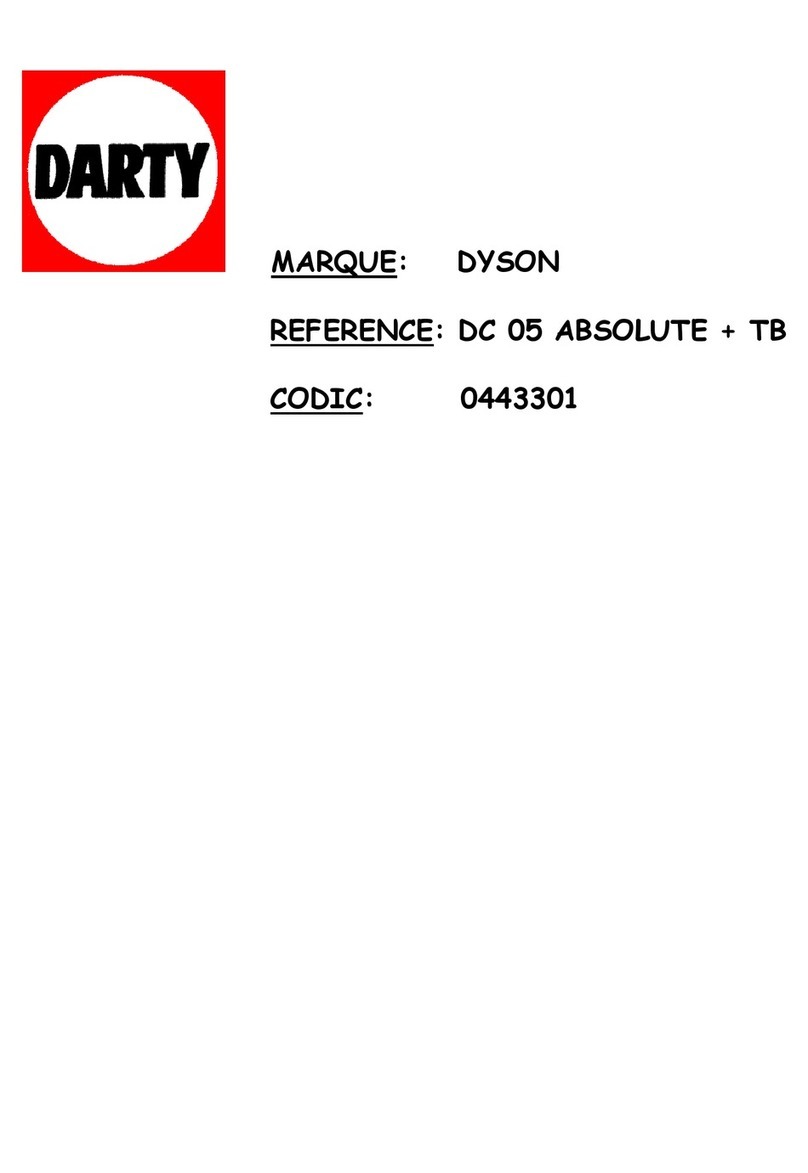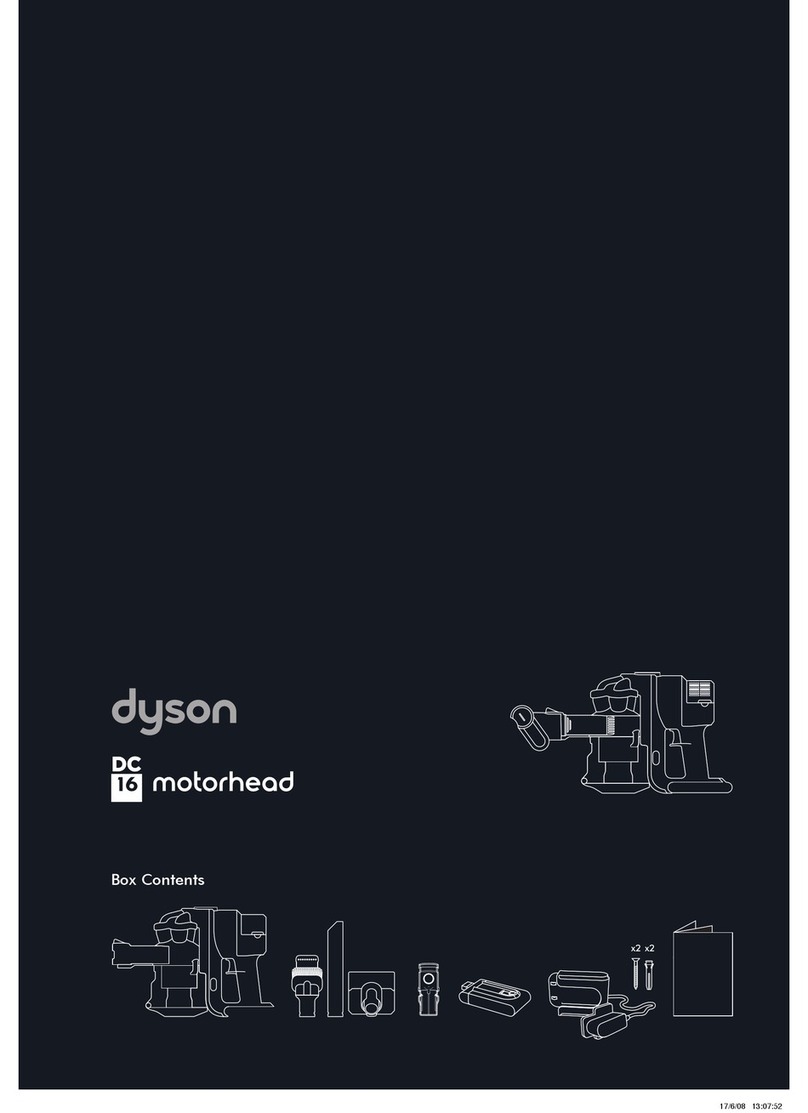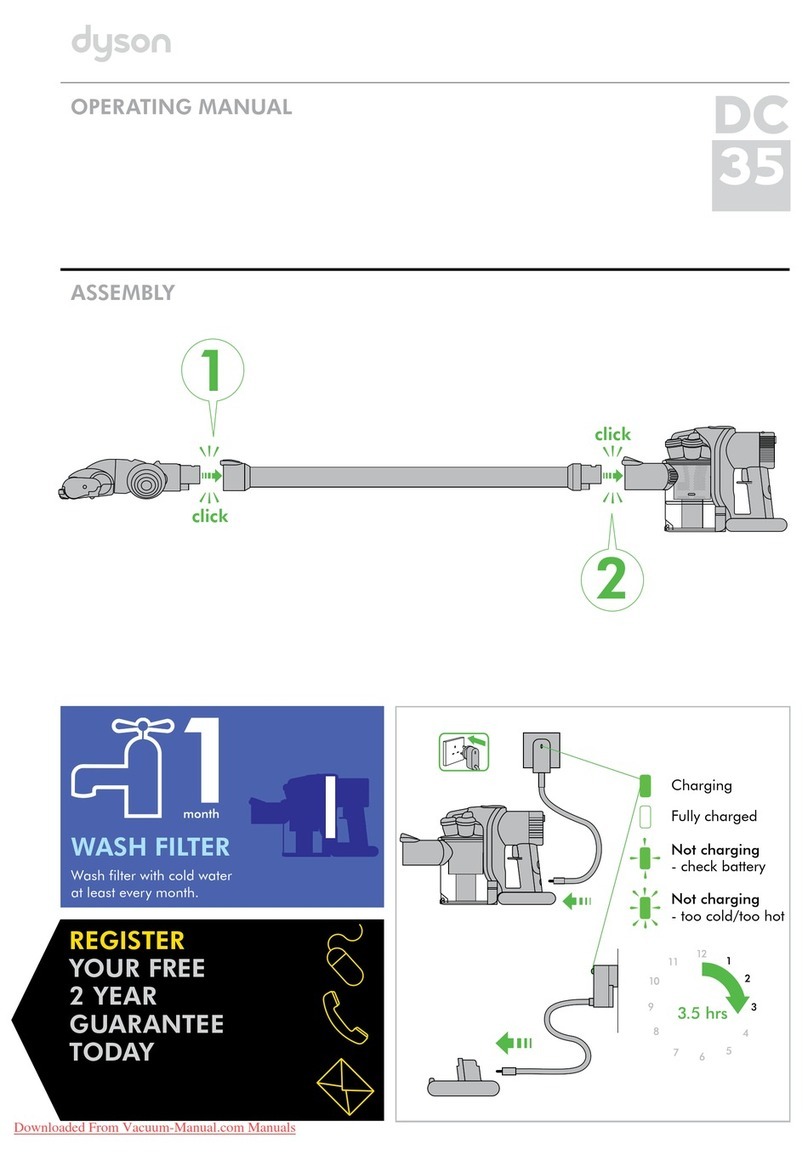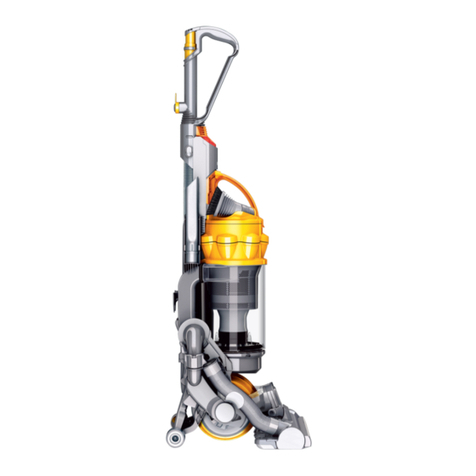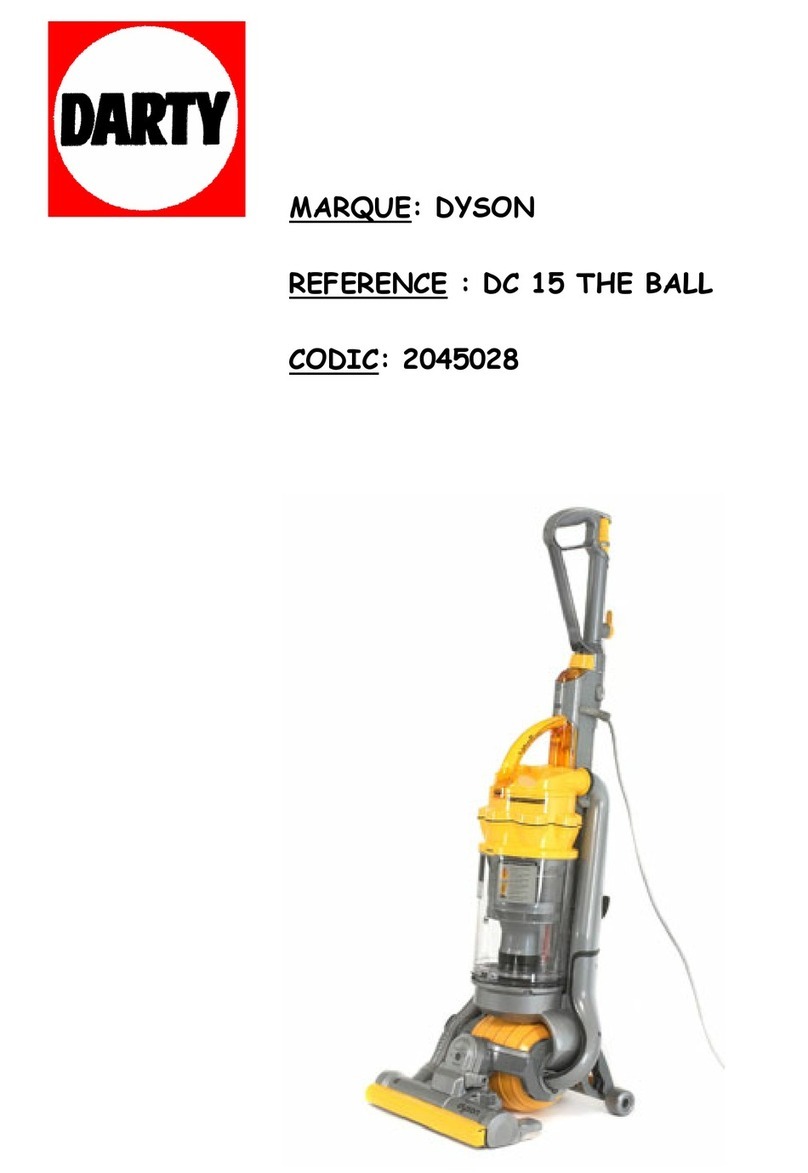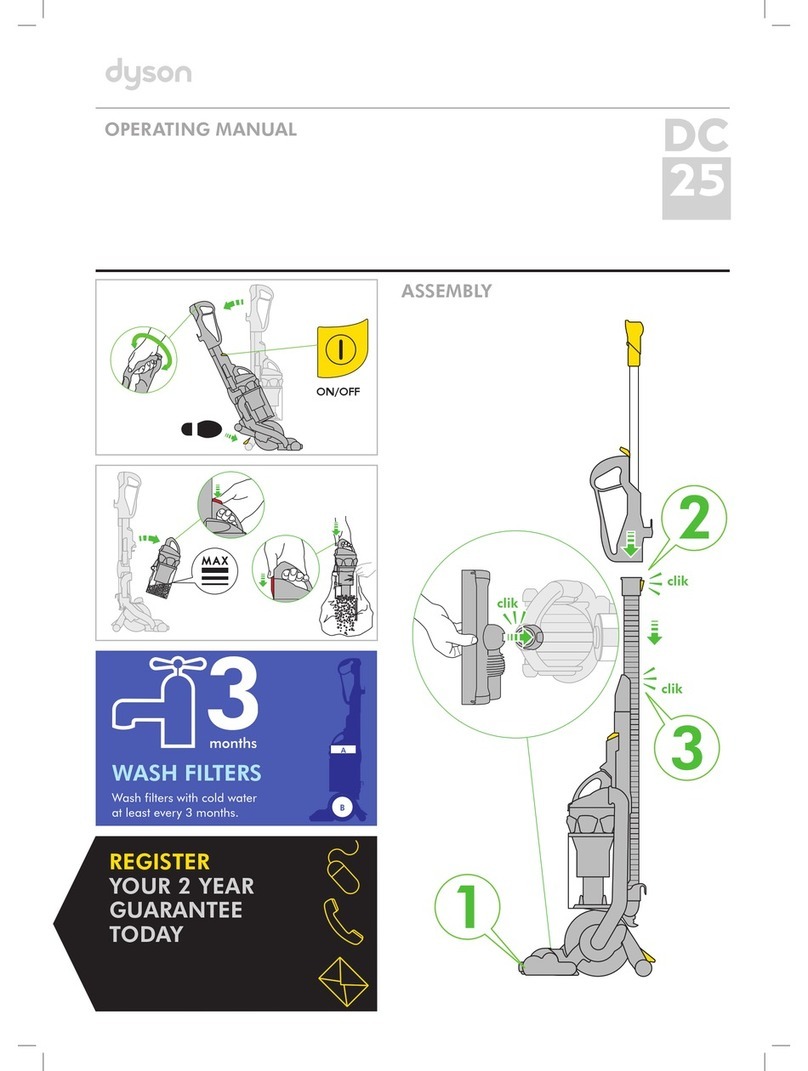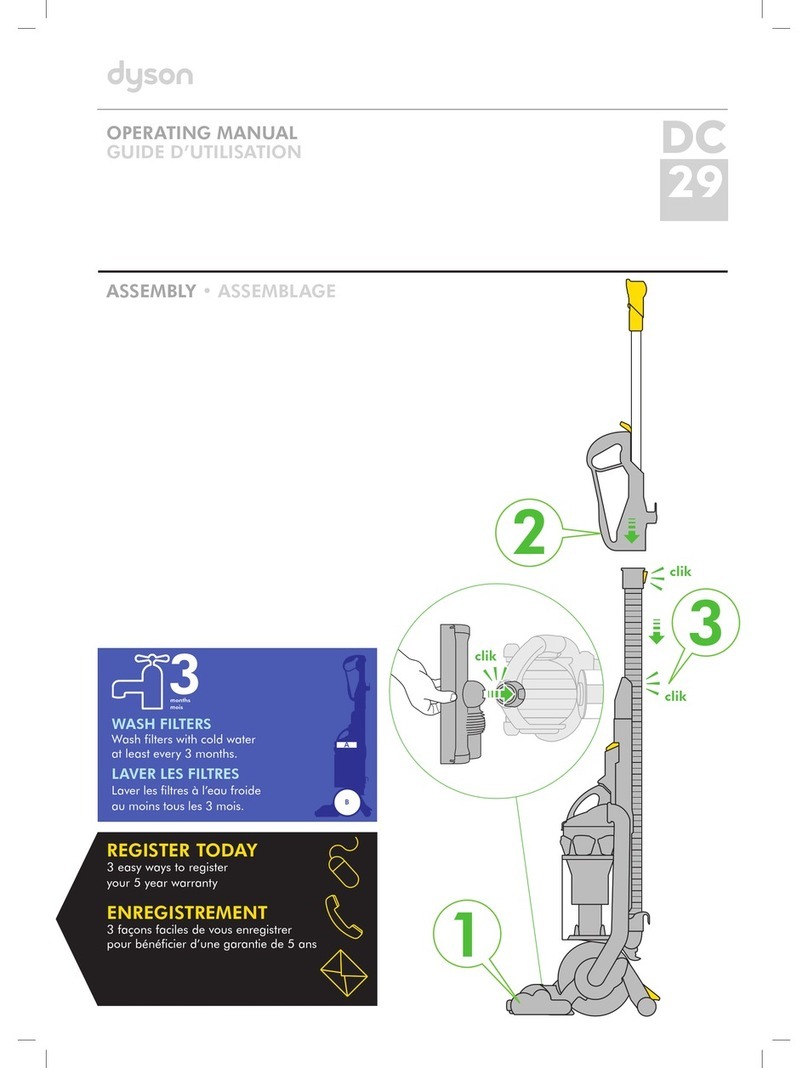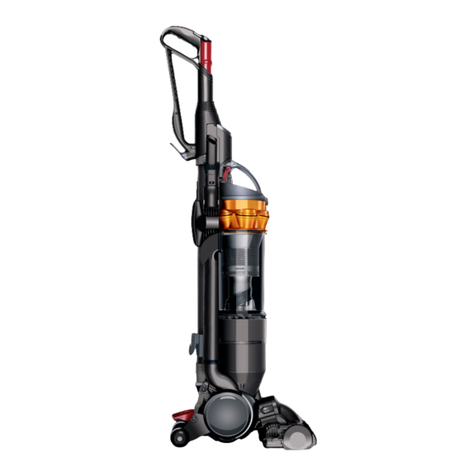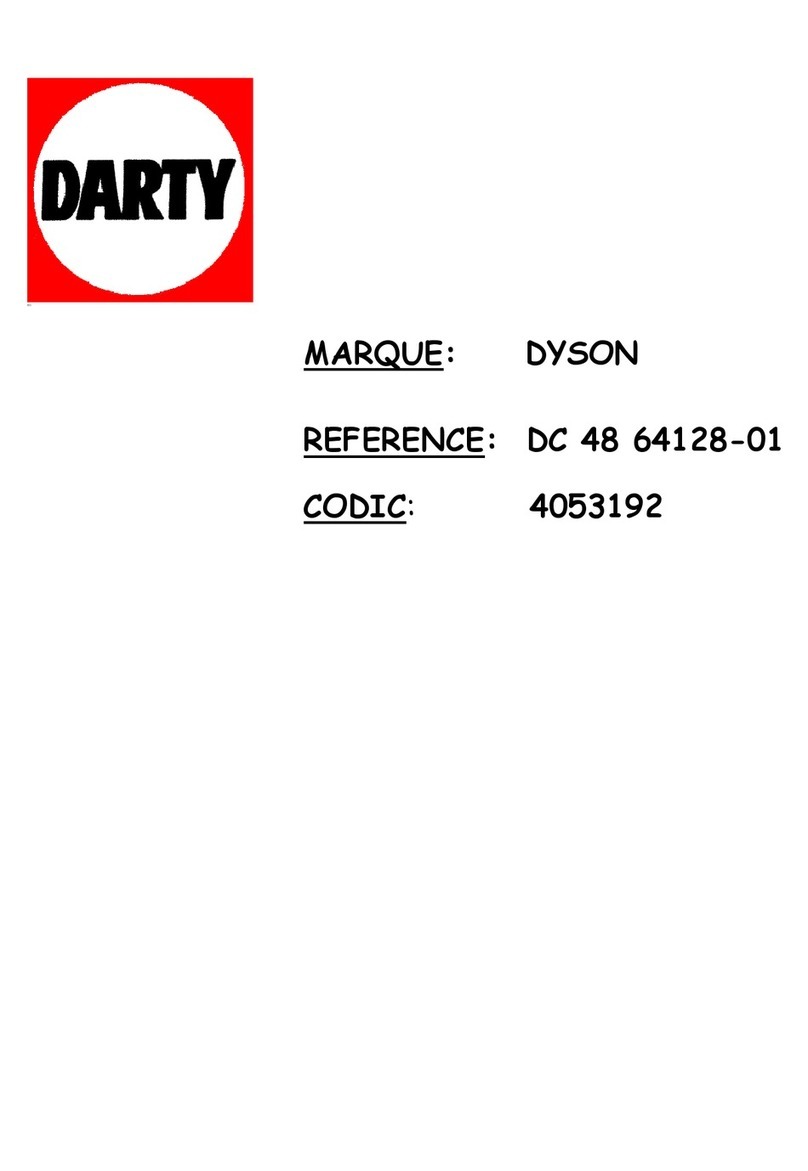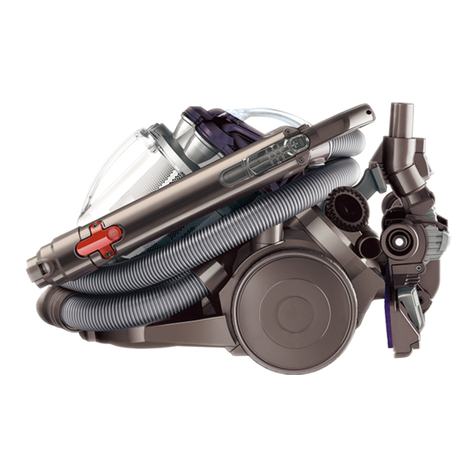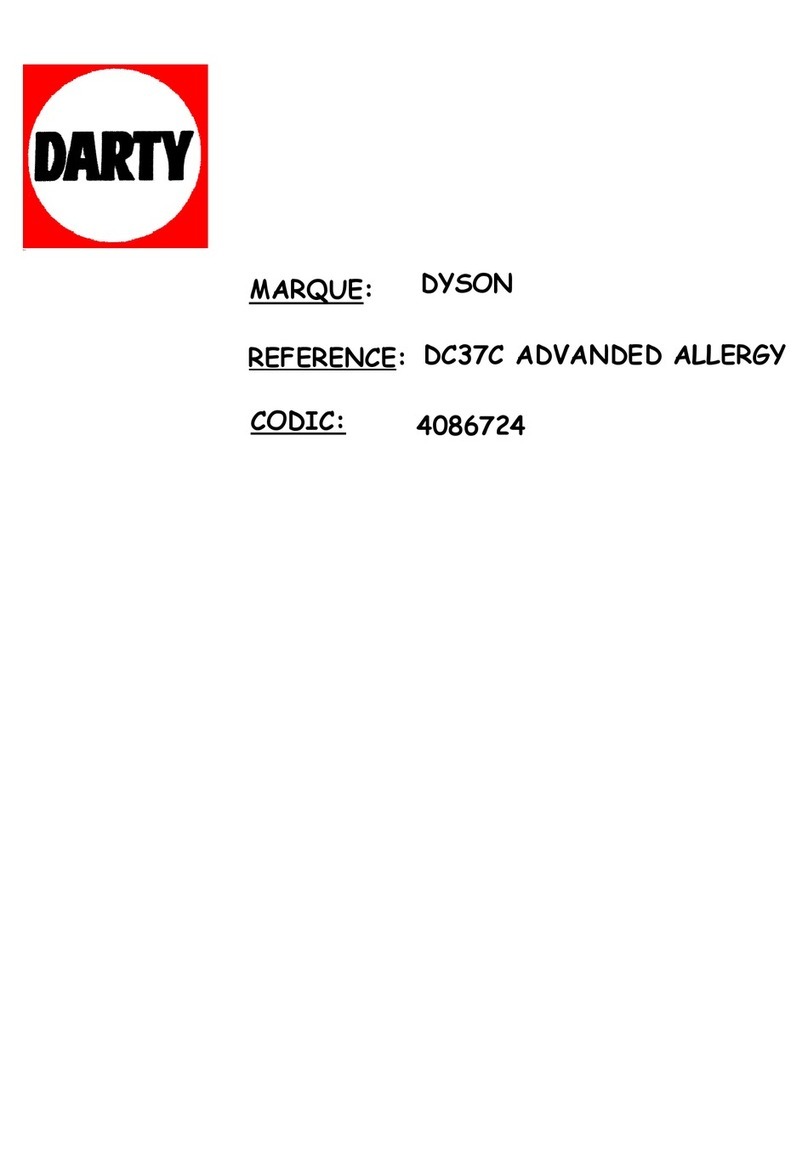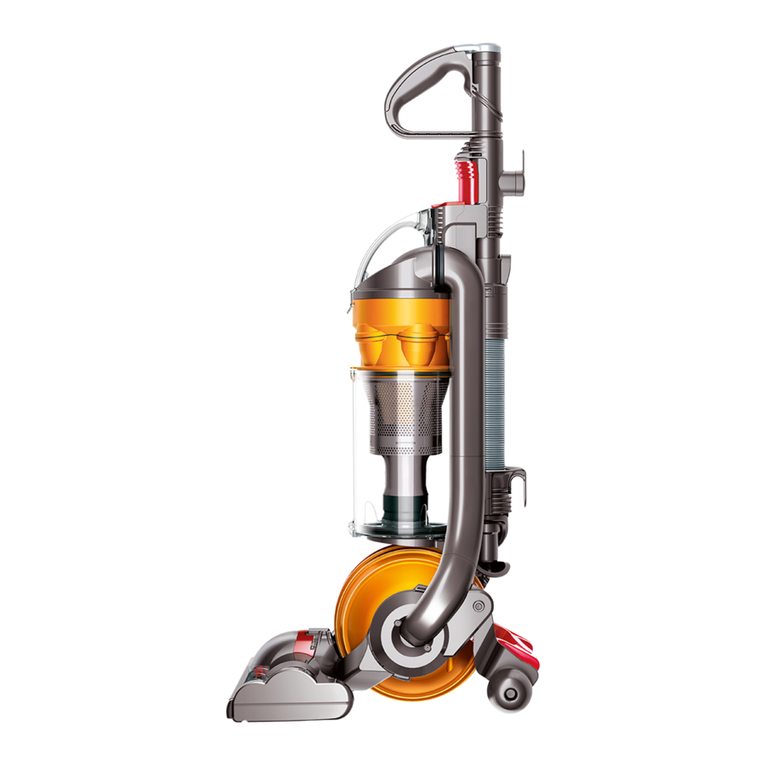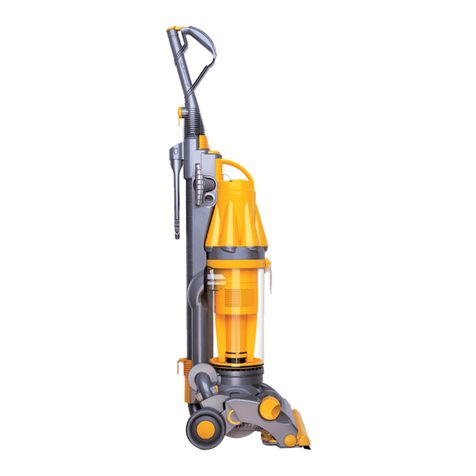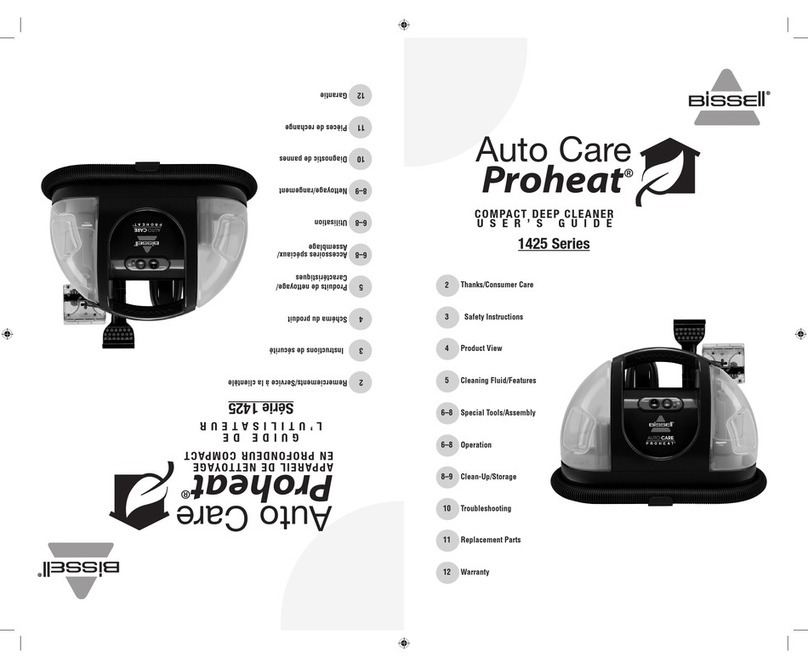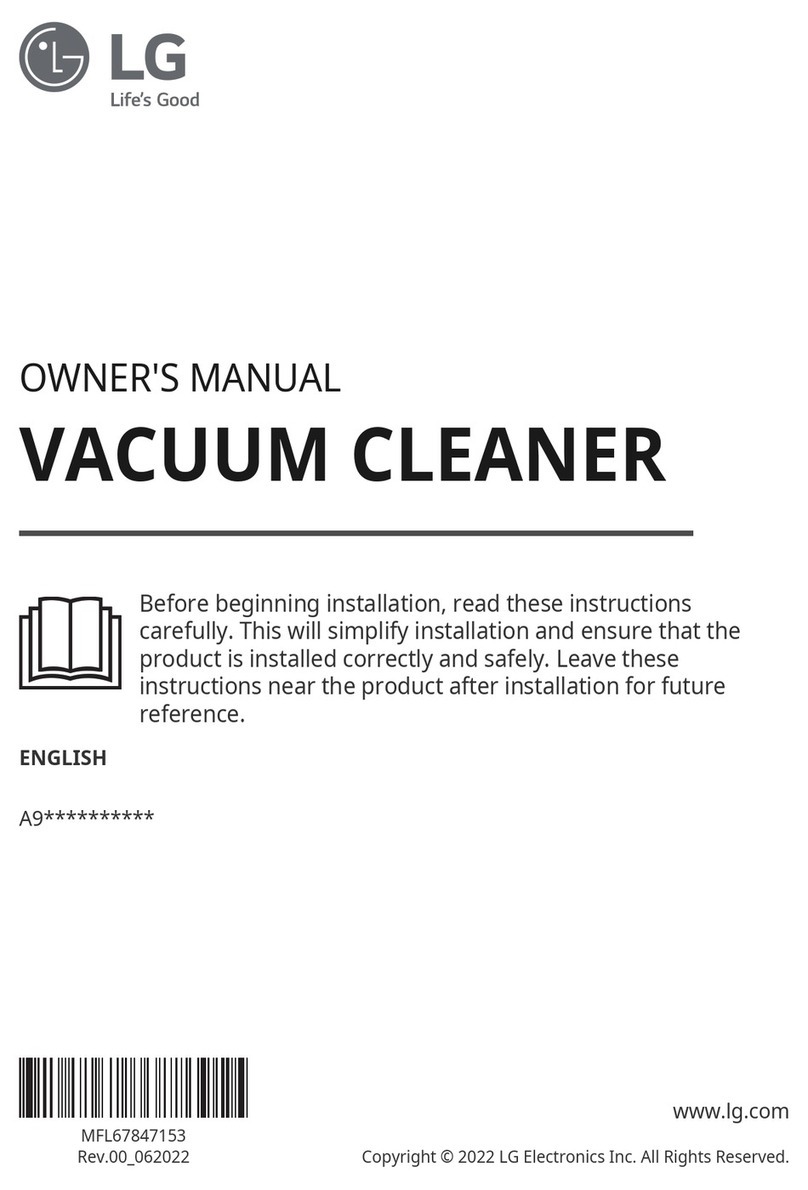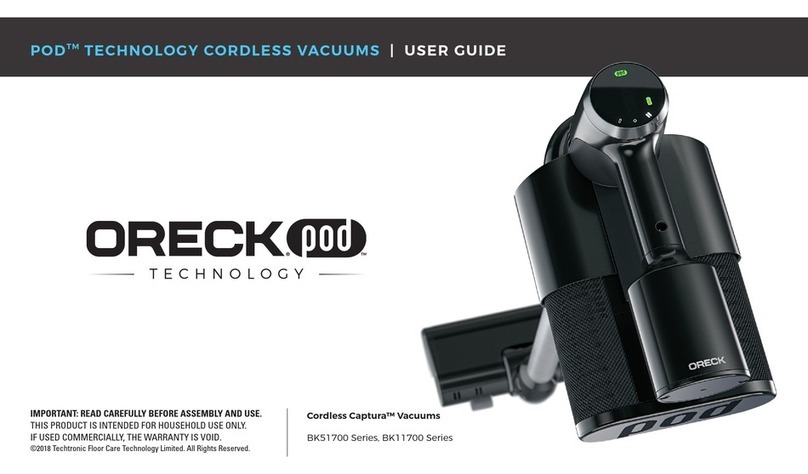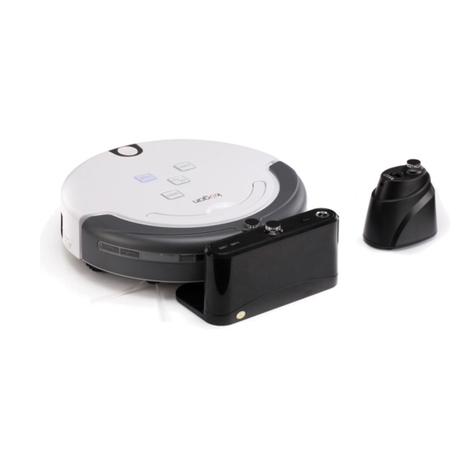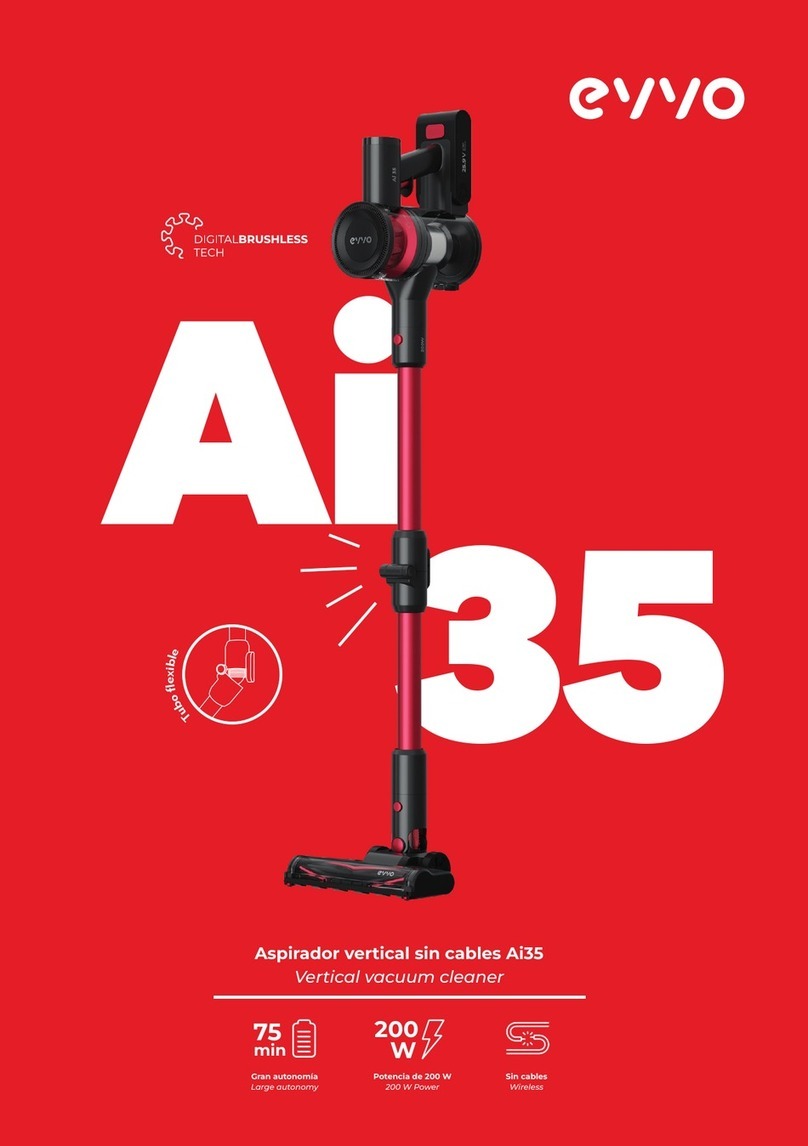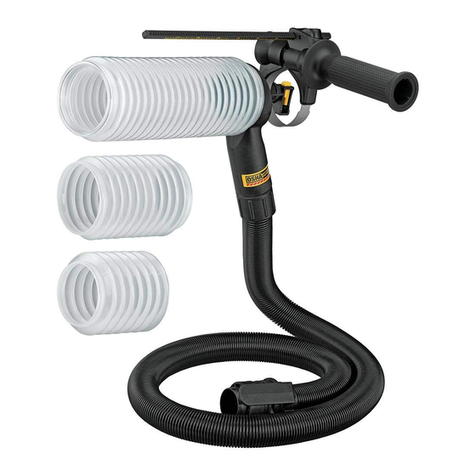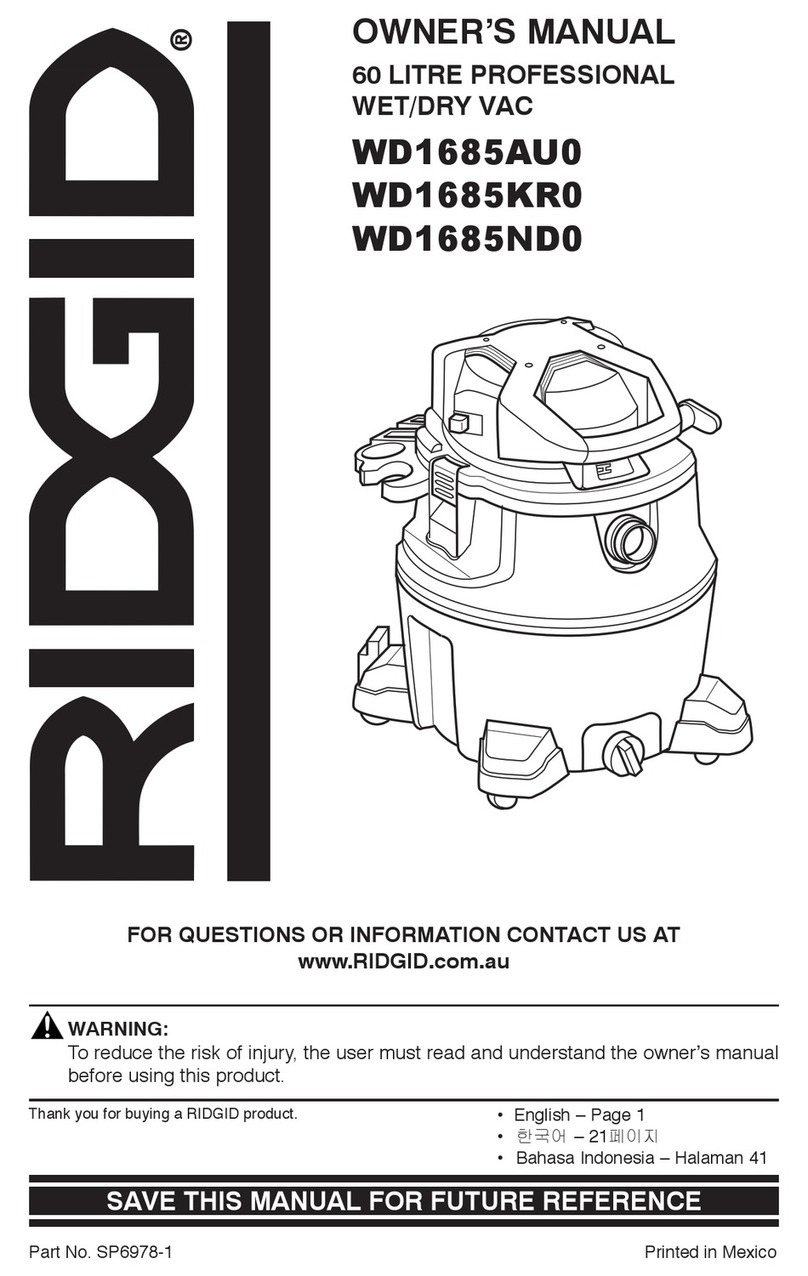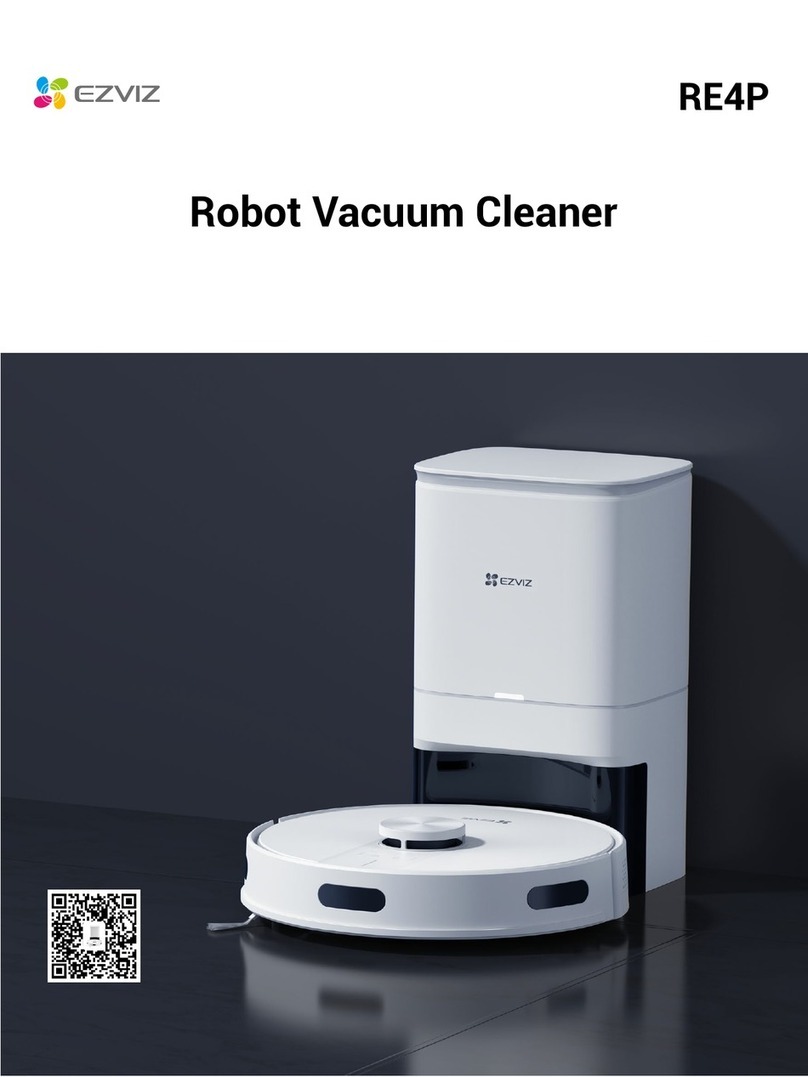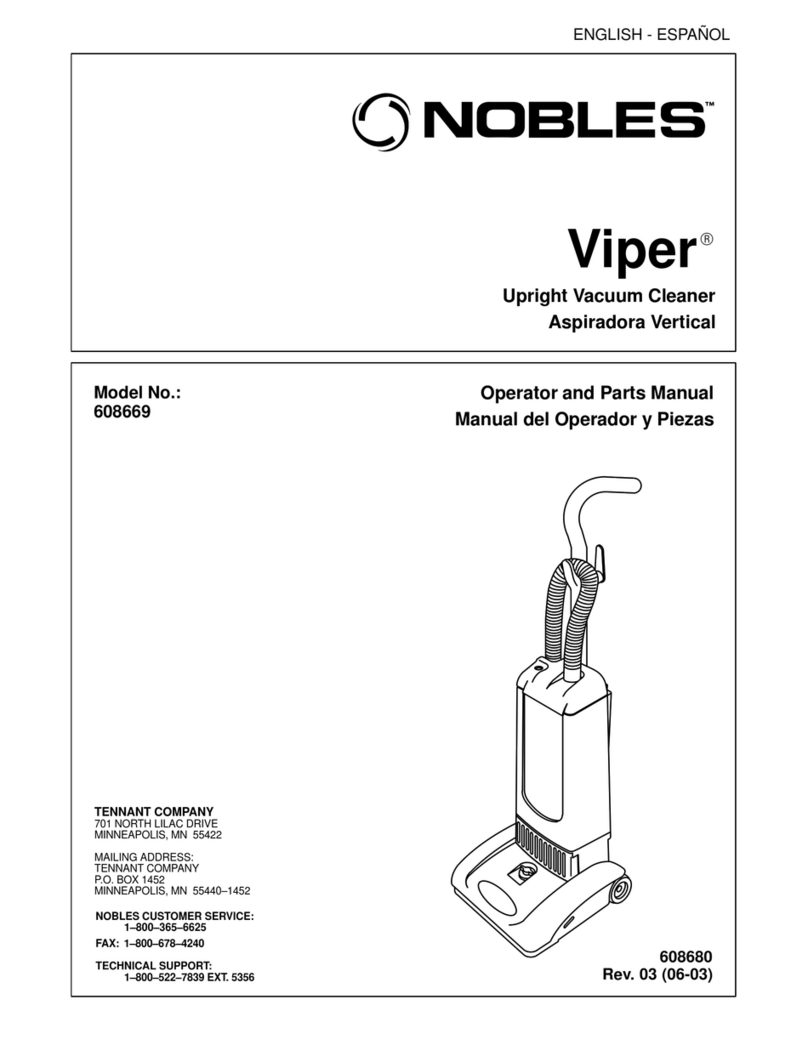service manual
Issued 05/05
5
Technical info.
Electrical fault diagnostic
1) When DC15 is switched on in the upright position, the brushbar motor is off. Tilting the machine into normal
vacuuming mode will automatically operate the upright switch, turning the brushbar motor on. The brushbar motor
can be switched off using the brushbar switch.
2) The vacuum motor of DC15 is fitted with a heat sensitive Thermal Cut-Out (TCO). This will shut the motor down for
up to 60 minutes if it reaches a temperature >96 degrees celcius. Excessive temperatures within the motor are
usually caused by machine / filter blockages.
3) The brushbar motor of DC15 is fitted with a current sensing protection circuit that will shut the brushbar motor off if
it is put under an excessive load (blocked / seized brushbar etc.). The protection circuit will remain off until it is reset.
This is achieved by: (a) pressing the brushbar switch.
(b) pressing the on / off switch.
(c) standing the machine upright and then re-tilting the machine into normal vacuum mode.
If the cause of the brushbar motor cut-out is not rectified the protection circuit will repeatedly reactivate, preventing the
brushbar from turning.
4) The fuse on the PCB assy is fitted for safety purposes. If the PCB fails, and the brushbar motor seizes, the fuse will
blow, cutting power to the brushbar motor.
Electrical fault diaignosis
Note: all ‘connection’ numbers and ‘continuity’ checks refer to the illustrations on page 4.
NNoommaacchhiinneeppoowweerr((vvaaccmmoottoorraannddbbrruusshhbbaarrmmoottoorrooffff))..
1) Check for damage / electrical failure to the plug / fuse / powercord / connections to on / off switch and the
mechanical switch actuation.
2) Check for a loose connection at points 11,22aanndd55..
3) Check continuity of powercord on / off switch / and internal cable.
NNooppoowweerrttootthheevvaaccmmoottoorr((bbrruusshhbbaarrmmoottoorroonniinnttiillttppoossiittiioonn))..
1) Check connections at points 99,,1100,,AAand BB.
2) Check continuity of internal cable and motor bucket seal/loom assembly.
3) Check vac motor continuity and motor brushes, windings, commutator etc.
NNooppoowweerrttootthheebbrruusshhbbaarrmmoottoorr((mmoottoorrvvaaccoonn))..
1) Check connections at points 77,,88,,1133,,1144,,1155,,1166,,CCaannddDD.
2) Check the continuity of the internal cable, PCB to yoke loom and the yoke loom assembly.
3) Check brushbar motor continuity and motor brushes, windings, commutator etc.
If all of the checks listed are correct the PCB will be at fault.
BBrruusshhbbaarrmmoottoorroonniinnuupprriigghhttppoossiittiioonn((sswwiittcchheessooffffwwiitthhbbrruusshhbbaarrsswwiittcch
h))..
1) Check connections at points 1111and 1122.
2) Check continuity of upright switch and upright switch loom.
3) Check the actuation of the of the upright switch.
If all of the checks listed are correct the PCB will be at fault.
BBrruusshhbbaarrsswwiittcchhddooeessnnoottsswwiittcchhbbrruusshhbbaarrmmoottoorrooffffiinnttiillttppoossiittiioonn..
1) Check connection to brushbar switch at points 33,,44and point 66.
If all of the checks listed are correct the PCB will be at fault.
BBrruusshhbbaarrmmoottoorroonnppeerrmmaanneennttllyy((wwiillllnnoottsswwiittcchhooffff))..
1) Check for a short in the upright switch loom.

